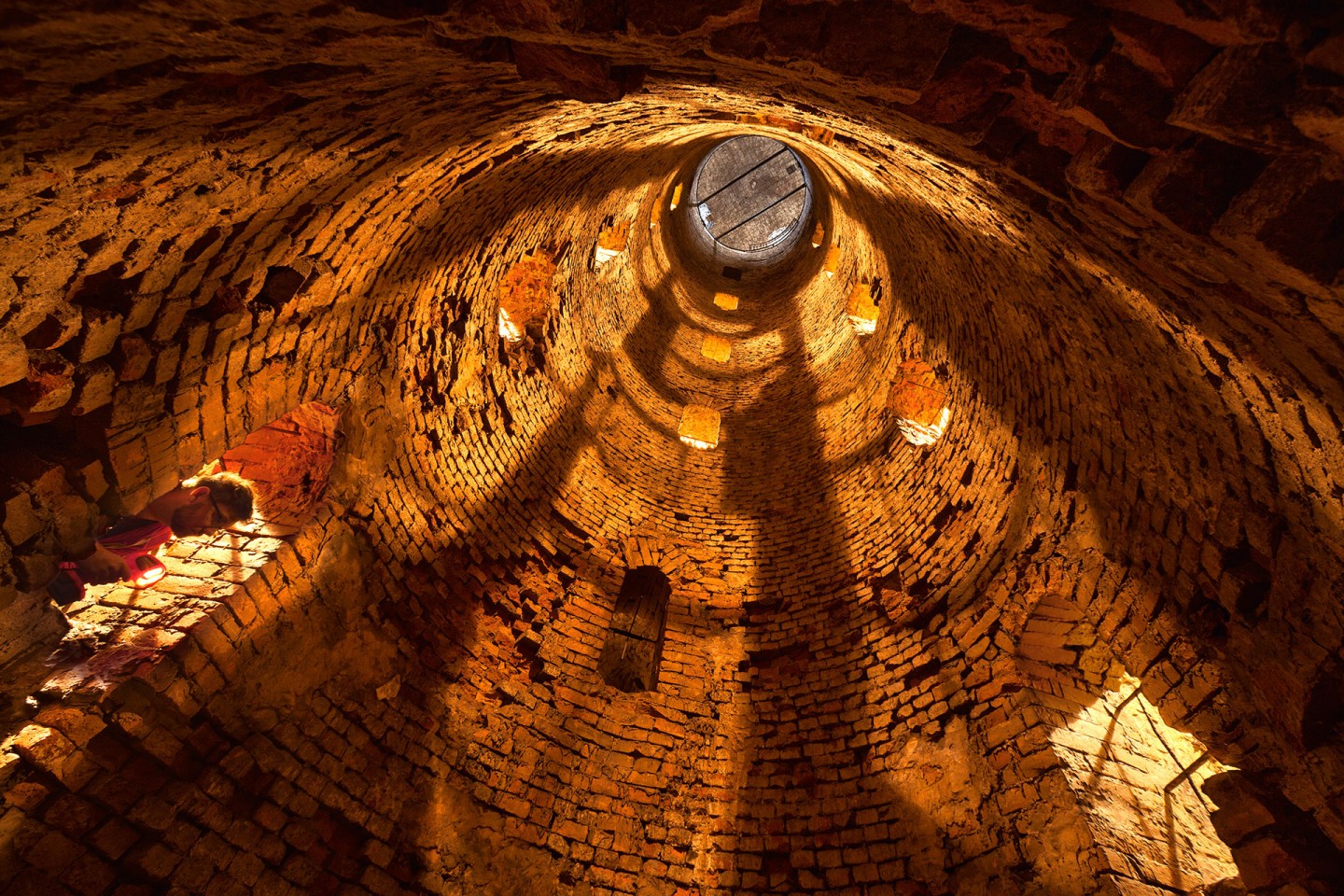
Roman Well Attraction
Belgrade Attractions - Roman well from the list Belgrade Attractions is located below the plateau of the Upper Town at Kalemegdan, comfortably placed and cleverly hidden from the eyes of passers by, behind a black, iron gate. It is believed that the well from the list Belgrade Attractions was built during the Austrian rule of Belgrade between 1717 and 1731, however, there are scriptures and legends that contradict this theory. One of them is the story from the time of Despot Stefan, whose biographer mentions the Roman well as a place of storage of food in the 14th century. In 1660, a Turkish writer, Ćelibija mentioned the Roman well as a grain silo. It is known that Kalemegdan was the home of a Roman fort, however, and it is not excluded that the well was made during their reign. Many legends are linked to the Roman well, but definitely the most interesting one is the story that says this mysterious well is the navel of the world, similar to Delphi. This ancient greek tradition speaks of Zeus who wanted to know where the center of the earth is, and let two white eagles, which met halfway, at the center point of the Earth. The legend follows the story of the Romans, who considered that it was in this place, the meeting of the two eagles, where Orpheus found a passage to Hades. However, according to the data on the construction of the Roman Well, no passage and no well existed in that time. Today, the bottom of the well is filled with water, however once it was a prison, and for some that prison became the eternal resting place. One story tells of cruel punishments of Turkish conspirators against the Austrian rule. In 1494, the Roman well was prison to 37 conspirators, the Hungarian Grand Duke Pavle ordered to starve and keep them in bottom of the well until they went crazy. When that happened, the austrians lowered weapons and the conspirators killed and devoured each other. Roman well was dug in limestone rock that is impermeable to water, no underground streams were found. It was unknown how the Roman well filled with water. When building the Habsburg engineers were trying to reach underground water, and in trying to reach it they came to the level of the riverbed of the Sava, however, underground water was not found. It was later found that the well accumulates surface water flowing into it, and it functions functions more like a tank than a well. The depth of the Roman well is 60 meters, and its size is about 3.5 meters. To get to the bottom of the Roman one goes through two spiral corridors located in the wall of the well. A total of 208 steps leads to the bottom of the well, and on every ninth step there is a resting place. The spiral stairs at the bottom are connected by semicircular hallway. Working hours of the Roman well is 11am to 7pm daily, from Monday to Sunday. Ticket price is 120.00 dinars, and discounted tickets are 60.00 dinars for students and pensioners.
Znamenitosti Beograd - Rimski bunar sa liste Znamenitosti Beograd nalazi se ispod platoa Gornjeg grada na Kalemegdanu, udobno smešten i vešto skriven od očiju posmatrača iza crnih, gvozdenih vrata. Smatra se da je bunar sa liste Znamenitosti Beograd izgradjen tokom austrijske vladavine Beogradom izmedju 1717. I 1731. godine, medjutim postoje spisi i predanja koji opovrgavaju ovu teoriju. Jedno od njih je opis iz vremena Despota Stefana, čiji biograf pominje Rimski bunar kao mesto skladištenja hrane još u 14. Veku. 1660. Godine turski pisac, Ćelibija pominje rimski bunar kao silos za žito. Zna se da je Kalemegdan bio dom rimskog kastruma, pa i nije isključeno da je bunar napravljen tokom njihove vladavine. Za Rimski bunar vezuju se mnoge legende, a definitivno je najinteresantnija ona koja govori da je upravo ovaj misteriozni bunar pupak sveta, sličan onom na Delfima. Starogčko predanje govori o Zevsu koji je želeo da sazna gde se nalazi središte Zemlje, pa je pustio dva bela orla koja su se susrela na pola puta, na tački središta Zemlje. Tu legendu prati priča Rimljana koji smatraju da je upravo na tom mestu susreta dva orla, Orfej pronašao prolaz do Hada. Medjutim, po podacima o izgradnji Rimskog bunara, ni prolaz a ni bunar u tom vremenu nisu postojali. Danas je dno bunara ispunjeno vodom, a ranije je bio tamnica, dok je nekima postao i večno počivalište. Jedna od priča govori o svirepoj kazni turskih zaverenika protiv austrijske vladavine. 1494. Godine u Rimskom bunaru utamničeno je 37 zaverenika, a ugarski vojvoda pavle naredio je da se izgladnjuju i drže na dnu bunara dok ne polude. Kada je do toga došlo spušteno im je oružje kako bi se medjusobno poubijali i proždirali. Rimski bunar ukopan je u krečnjački kamen koji ne propušta vodu, a nisu pronadjeni ni podzemni vodotoci koji ga prosecaju. Dugo se nije znalo kako se Rimski bunar puni vodom. Pri izgradnji su habzburški inženjeri pokušavali da dopru do podzemnih voda, i radeći na tom zadatku došli su čak do nivoa korita Save, medjutim podzemnih voda nije bilo. Kasnije je otkriveno da bunar akumulira površinske vode koje se slivaju u njega, pa je njegova funkcija više funkcija cisterne nego bunara. Rimski bunar dubok je 60 metara, a njegovo oko veličine je 3.5 metra. Do dna Rimskog bunara dolazi se kroz dva spirala hodnika koji se nalaze u zidu bunara. Do dna ima ukupno 208 stepenika, a na svakom devetom je odmorište. Spiralne stepenice su na dnu spojene polukružnim hodnikom. Radno vreme Rimskog bunara je od 11 do 19 h svim danima, od ponedeljka do nedelje. Cena ulaznice je 120,00 dinara, a ulaznice sa popustom su 60,00 dinara za učenike, studente i penzionere.
see location here : link
